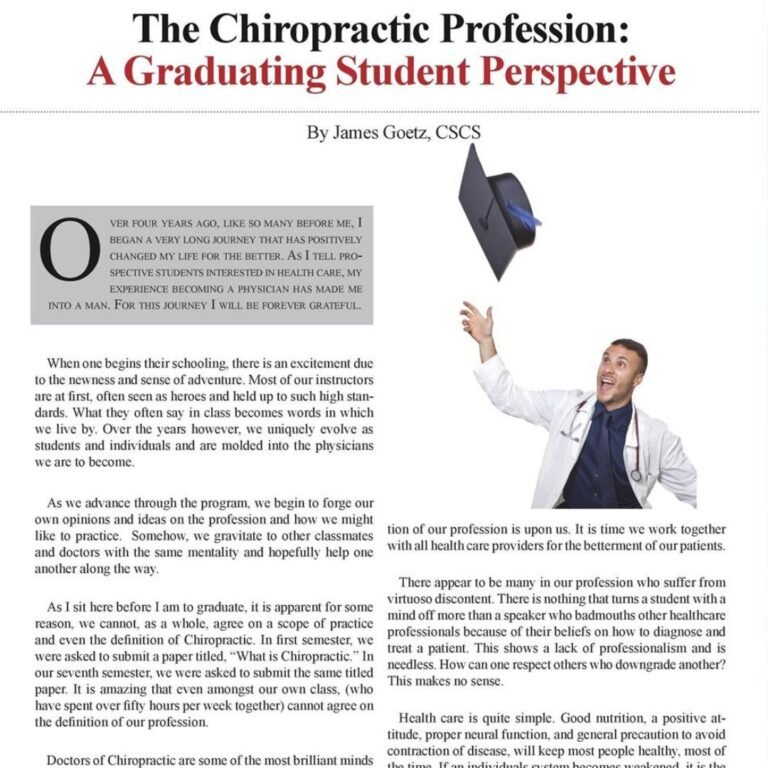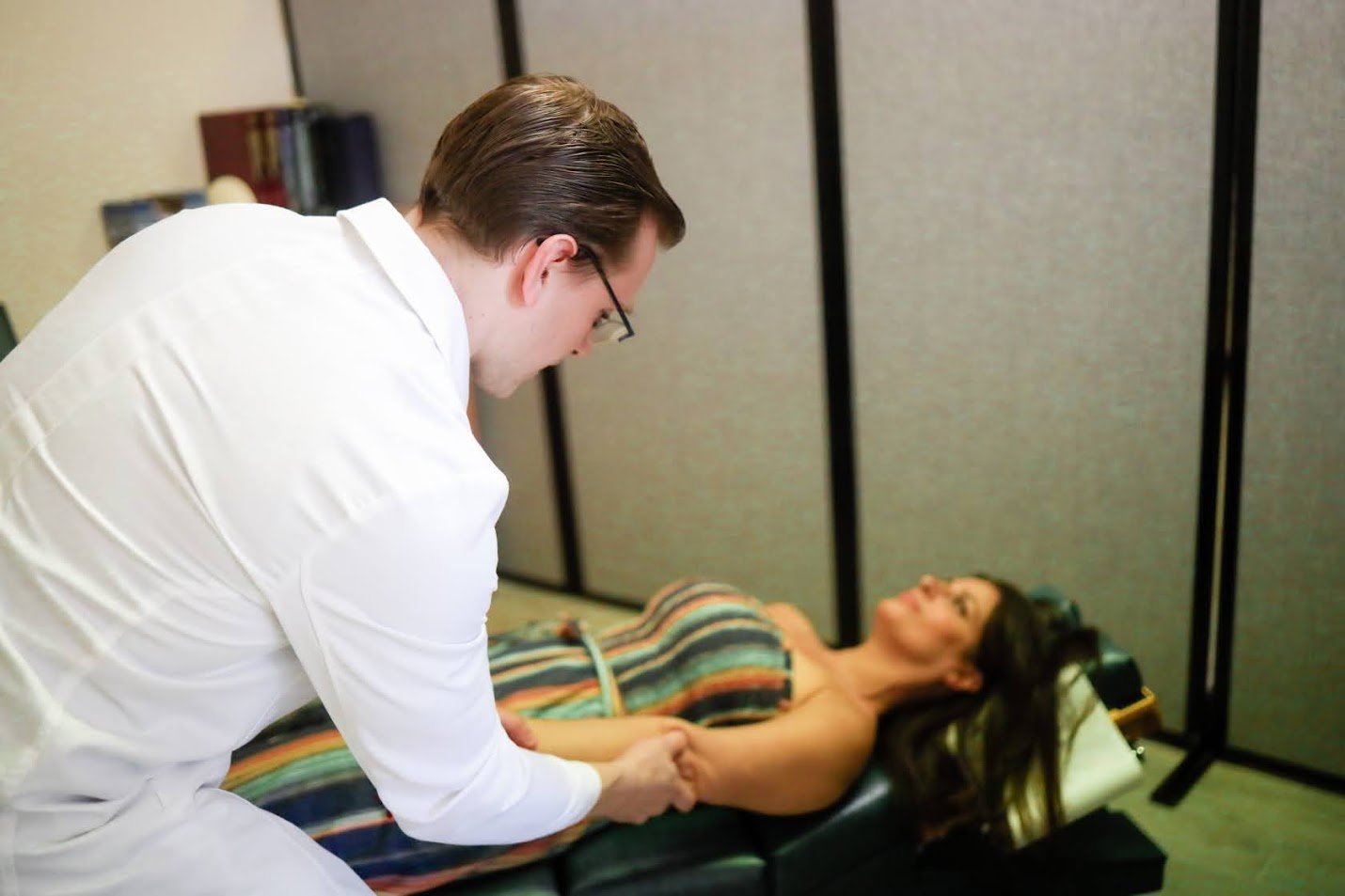In today’s fast-paced world, when someone says “doctor,” most people picture a white-coated professional in a hospital, scribbling prescriptions or prepping for surgery as opposed to a doctor of chiropractic who is….just as qualified if not more competent in many instances.
It’s a deeply ingrained image, shaped by decades of media, education, and cultural norms. But what if I told you that this narrow view is limiting your access to effective, non-invasive healthcare? What if the doctor you need for your nagging back pain, persistent headaches, or mobility issues isn’t an MD at all, but a Doctor of Chiropractic?
Trustindex verifies that the original source of the review is Google. Dr. Mike at FIT Clinic is hands-down the best chiropractor I’ve seen. He’s incredibly knowledgeable, thorough, and truly cares about long-term wellness. I’ve seen real improvements thanks to his personalized care. Highly recommend!Trustindex verifies that the original source of the review is Google. Wonderful experience with Dr. Mike. Had a nagging issue, he took a look at it, gave treatment and my problems never came back. Thank you.Trustindex verifies that the original source of the review is Google. I can’t say enough great things bout Dr. Brandon. As a competitive athlete with Spartan races and CrossFit, I’m constantly challenging my body and Dr. Brandon has been able to “fix” me on several occasions so I could compete. His knowledge and experience never cease to amaze me and I recommend him to my gym and friends.
Owner's reply
Each time we receive a review like this, we are truly humbled. Thank you so much for taking the time to review Functionised. Dr Brandon is one of the best in the world and we are so incredibly fortunate to have him. We are all spoiled in a good way. Keep up the training, exceed your goals and keep being you...it's who you do best. Thank you Yvette! We will see you soon!Trustindex verifies that the original source of the review is Google. Dr. Mike & the staff are very friendly & professional. They really know how to help improve your quality of life.. I went in to see them & after a couple of visits with Dr. Mike he made me feel relax & got my range of motion with my back good again.
Owner's reply
Thank you Gary!!! We strive to be our best so you may be at yours. We sincerely appreciate you.Trustindex verifies that the original source of the review is Google. With covid and advanced training for my field of work, my health and nutrition dropped off for several years now. I had known of Dr. Mike from my boyfriend but never started a nutrition program before and honestly had anxiety with considering a program at all. However, I couldn’t have been more please with how welcoming and quirky Dr. Mike is - I felt right at home! Our sessions have consisted of countless laughs about life all the way to in-depth conversations about nutrition. Not only that but it’s working! I’m losing weight and starting to gain back the confidence I lost so long ago. I’d definitely recommend him (and have!) to anyone who would also like to start down this journey.
Owner's reply
Thank you so much Holly for your trust in us to care for your health. You’re a true Team Functionised member and we will continue to support you on your pathway to success 😁Trustindex verifies that the original source of the review is Google. Doc Mike Brandon has been our chiro for the past two years, and he has yet to disappoint us in pretty much any service he has provided. Always makes great conversation and makes our day! Thanks for everything you've done for us!!
Owner's reply
Thank you Samantha for your kind words. Dr. Brandon is sincerely loved by us all and even better- is an AMAZING physician. We appreciate you!!!!Trustindex verifies that the original source of the review is Google. It was recommended that I go see Dr. Mike for some issues I had. I have not looked back and appreciate my weekly adjustments. Dr. Mike is very knowledgeable, asks you questions, and listens to you. He also works on muscular issues. I would highly recommend him, he is that good, and I will continue seeing him. Only issue I am not thrilled with is the yearly contract, which cannot be broken.
Owner's reply
Thank you so very much Ms. Van Stolk for your kind words. Dr. Brandon is genius in his diagnosis and treatment and best of all, cares deeply. We are sorry you are not a fan of our health care membership program. We have options for everyone, including simply going month to month with zero yearly commitment to your personal health. With health care unfortunately in the condition it's in, our health care program has given individuals not only a break financially but gives them the power to take charge of their own health, creating a more healthy and fit world.Verified by TrustindexTrustindex verified badge is the Universal Symbol of Trust. Only the greatest companies can get the verified badge who has a review score above 4.5, based on customer reviews over the past 12 months. Read more
It’s time to challenge that paradigm and explore what truly makes someone a competent physician—regardless of their specialty.
Let’s start by unpacking what we mean by “doctor.” Historically, the term comes from the Latin “docere,” meaning “to teach.” A doctor is someone who educates, diagnoses, and guides patients toward better health. Yet, society often equates doctors solely with Medical Doctors (MDs), overlooking other doctoral-level professionals like Doctors of Chiropractic.
This bias isn’t just unfair; it’s harmful. It dismisses highly trained experts who specialize in neurological, muscular, and skeletal conditions, often opting for drug-free, surgery-free solutions as a first line of defense.
Consider this: if you’re dealing with low back pain—a complaint that affects up to 80% of adults at some point—why rush to pills or invasive procedures when evidence shows that a Doctor of Chiropractic can provide relief that’s just as effective, with fewer risks?
A 2018 randomized clinical trial published in JAMA Network Open found that adding chiropractic care to usual medical treatment led to moderate improvements in pain intensity and disability for active-duty military personnel with low back pain.
This isn’t an outlier; it’s part of a growing body of research affirming the role of the Doctor of Chiropractic as a primary care provider. But let’s dig deeper into education, because that’s where misconceptions often start. Many assume Doctors of Chiropractic have less rigorous training than MDs. The reality? Both paths demand exceptional commitment.
A Doctor of Chiropractic typically completes a four-year undergraduate degree, followed by four years of chiropractic school—totaling over 4,200 hours of classroom, lab, and clinical experience. This includes anatomy, physiology, neurology, radiology, and biomechanics, often exceeding the hours MDs spend in similar foundational subjects.
In fact, a comparative study highlights that chiropractic education mirrors medical education in basic sciences, but diverges to emphasize hands-on, conservative care over pharmacology and surgery.

Goetz, a Certified Strength and Conditioning Specialist turned Doctor of Chiropractic, emphasizes the holistic training that prepares these professionals for real-world challenges, from sports performance to chronic pain management.
Now, challenge your own beliefs: Why do we reserve the title of “real doctor” for those who prescribe drugs or cut open bodies? Is it because we’ve been conditioned to value quick fixes over sustainable healing? Peer-reviewed studies from the last seven years paint a different picture. A 2021 review in Frontiers in Pain Research concluded that spinal manipulative therapy (SMT)—a core technique used by Doctors of Chiropractic—is as effective as other recommended therapies for non-specific chronic spine pain, including medical care.
Similarly, a 2024 systematic review in Chiropractic & Manual Therapies found that patients initiating care with a Doctor of Chiropractic for spine-related pain incurred lower downstream healthcare costs compared to those starting with medical management.
So, where do we fall short as a society? It’s in expecting every doctor to fit the MD mold. A competent physician, whether MD or Doctor of Chiropractic, isn’t defined by tools like heat, ice, stim, or quick adjustments—the infamous “flying 7” maneuver that’s more gimmick than medicine. True competence lies in a thorough exam, accurate diagnosis, personalized treatment plan, execution, and quantifiable results. Not all doctors are the same; an MD who rushes through appointments without listening is no better than a Doctor of Chiropractic who skips diagnostics for rote adjustments.
Take musculoskeletal pain, for instance. A 2025 study in the Journal of Orthopaedic & Sports Physical Therapy affirmed that SMT reduces pain and disability to the same degree as education and exercise for lower back issues.
Doctors of Chiropractic excel here because their training focuses on the root causes—misalignments, imbalances, and lifestyle factors—rather than masking symptoms. In Goetz’s “The Heartfelt Truth on Fat” from The American Chiropractor (2015), he discusses how nutritional and structural interventions by Doctors of Chiropractic can address systemic issues like dyslipidemia and hypertension, broadening their scope beyond just spines.
Influencing change starts with you, the reader. Next time you feel that twinge in your neck or ache in your joints, don’t default to the ER or pharmacy. Call a competent Doctor of Chiropractic first. Why? Because evidence from a 2024 meta-analysis in Chiropractic & Manual Therapies shows SMT’s benefits for migraines, reducing pain days and intensity.
A 2025 systematic review in Systematic Reviews further supports SMT for acute neck pain, improving range of motion and decreasing disability safely.
But autonomy and respect aren’t automatic; they require paradigm shifts. A 2008 article in Chiropractic & Manual Therapies (updated in discussions through 2024) argues that for chiropractic to gain mainstream respect, it must emphasize evidence-based practice and cultural authority.
Today, with integrations like VA residencies for Doctors of Chiropractic in 2025, we’re seeing progress—residents engage in research and interdisciplinary care, proving their value.
Challenging your views means recognizing that Doctors of Chiropractic are primary care specialists for an array of conditions where drugs and surgery should be last resorts. A 2022 Healthline review notes chiropractic’s efficacy for low back pain, backed by systematic studies.
They’re trained to refer when needed, respecting the full healthcare ecosystem. Not every Doctor of Chiropractic is created equal, just like not every MD is.
Seek those who quantify progress—using tools like patient-reported outcomes or functional assessments. A 2019 Harvard Health piece reinforces that chiropractic alignment improves function and aids self-healing.
In conclusion, it’s time to expand your definition of a doctor. A Doctor of Chiropractic isn’t a secondary option; they’re often the smartest first call for neurological, muscular, and skeletal woes.


